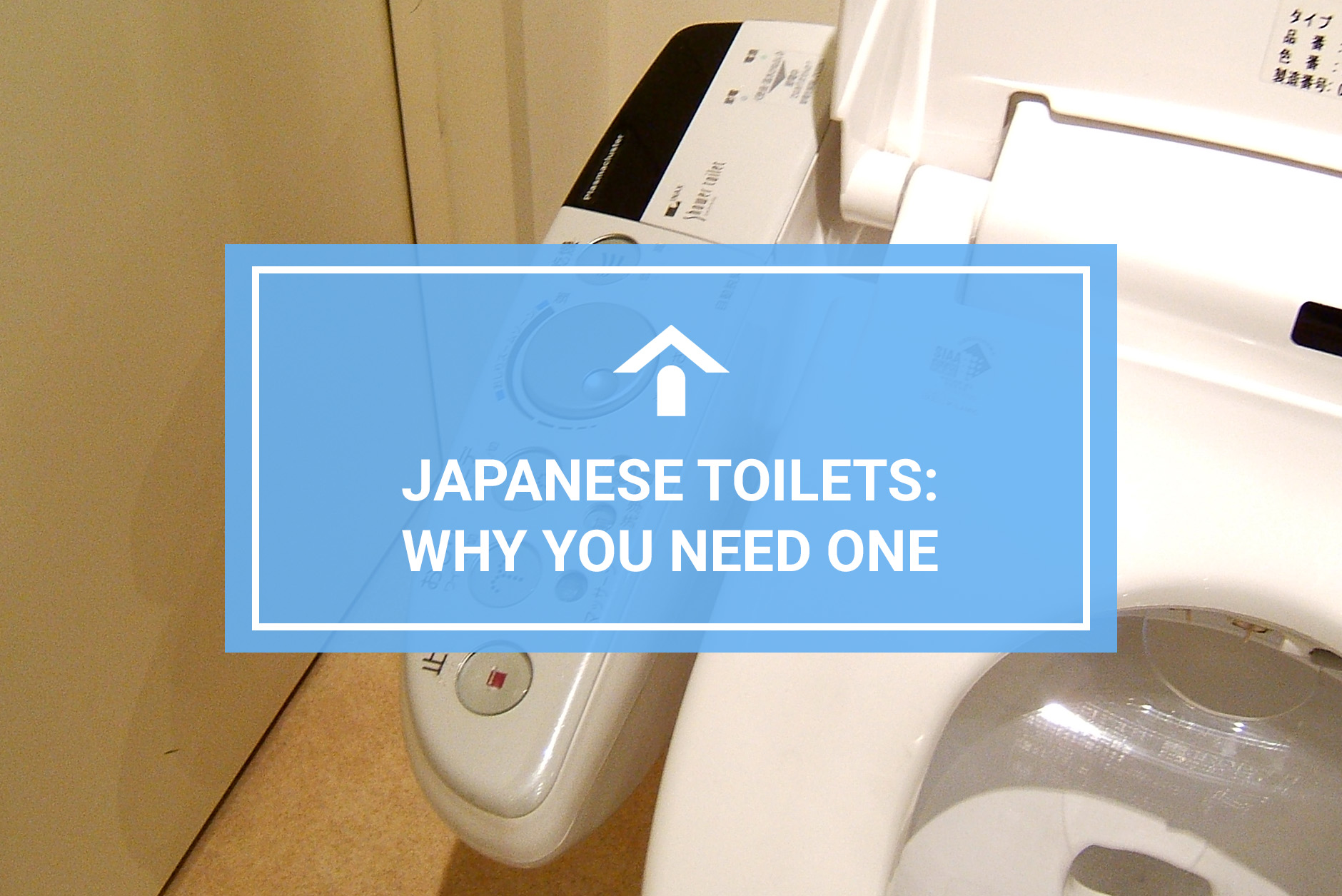In the realm of bathroom fixtures, Japanese toilets stand out as innovative marvels that seamlessly blend technology and comfort. Originating from a rich history of traditional and Western influences, these toilets have gained global acclaim for their advanced features and ergonomic design. Japanese toilets are not just for the tech-savvy; they cater to a wide range of users seeking a more efficient and enjoyable bathroom routine.
I was initially a skeptic of these toilets. I didn’t think I would need so many advanced features for an experience that I try to keep relatively short. However, when the pandemic hit and toilet paper was hard to come by, I was very glad I had a bidet at my disposal. Once you try a Japanese toilet, you may never want to go back to a normal toilet again.
In this post, we will explore the fascinating world of Japanese toilets, shedding light on what makes them unique and why they have become a desirable addition to modern bathrooms worldwide.
What Is A Japanese Toilet?
Japanese toilets (also referred to as washlets or bidet toilets) are high-tech toilets with built-in smart technology. At the heart of a Japanese toilet’s allure are its distinctive features that redefine the bathroom experience. Advanced bidet functions, heated seats, automatic lid opening and closing, built-in deodorizers, and air purifiers are just a few elements that set these toilets apart. The ergonomic design and technological innovations prioritize user comfort and hygiene, providing a luxurious and convenient experience.
The History Of Japanese Toilets
The history of Japanese toilets is quite fascinating, and it reflects the country’s commitment to innovation and technological advancement in various aspects of daily life. Historically, Japan primarily used squat toilets, known as “washiki” or “zachōsu.” This style of toilet was common in many parts of Asia and Europe and required the user to squat over a hole in the ground.
During the Meiji era (1868-1912), Japan underwent significant modernization, and Western influences became more prominent. Western-style toilets, commonly referred to as “yōshiki” or “Western-style toilets,” started to replace squat toilets in urban areas and more modern establishments
In the mid-20th century, Japan experienced an economic boom, and this era marked the beginning of technological advancements in various aspects of life, including toilets. In 1980, TOTO, a leading Japanese sanitary ware manufacturer, introduced the “Washlet.” The Washlet was an electric toilet seat with a built-in bidet feature for posterior cleansing. This innovation laid the foundation for the high-tech toilets that would become synonymous with Japanese bathrooms.
Further advancements in toilet technology were made as the years progressed with the introduction of features such as automatic flushing, heated seats, and air deodorizers. In the late 20th and early 21st centuries, Japanese toilets evolved into high-tech marvels, often referred to as “smart toilets” or “electronic bidet toilets.” Features expanded to include adjustable water pressure, temperature control, air drying, and even music or sound effects to provide privacy for users. Today, Japanese toilets seamlessly integrate modern smart technology to create an unparalleled bathroom experience.
The Benefits Of A Japanese Toilet
Investing in a Japanese toilet goes beyond the allure of high-tech gadgets in the bathroom. These toilets offer a range of tangible benefits that can improve your health, your wallet, and more.
Improved Hygiene
One of the standout features of Japanese toilets is the incorporation of bidet functions. These toilets go beyond traditional toilet paper by offering warm water cleansing, adjustable water pressure, and oscillating or pulsating sprays. This not only ensures a thorough and gentle cleaning but also promotes better personal hygiene. The use of water minimizes irritation and reduces the risk of skin-related issues, providing a refreshing and comfortable experience.
Reduced Eco Footprint
Japanese toilets are designed with eco-conscious features to minimize water usage. Many models include dual-flush options, allowing users to choose between a full flush for solid waste and a partial flush for liquid waste. Additionally, the bidet function reduces the need for excessive toilet paper consumption. By cutting down on water and paper usage, Japanese toilets contribute to environmental sustainability, making them an eco-friendly choice for households.
Reduced Household Expenses
Thanks to their water-saving features, Japanese toilets can contribute to lower water bills over time. The dual-flush mechanism ensures that only the necessary amount of water is used for each flush, leading to decreased water consumption. Additionally, the integration of bidet functions can lead to a reduction in the need for toilet paper, further lowering household expenses in the long run.
Less Maintenance
You would think that a more complex toilet would be harder to maintain, but that’s not the case. Japanese toilets are designed with durability and minimal maintenance in mind. The technology used in these toilets is often reliable and built to last, reducing the frequency of repairs and replacements. The use of high-quality materials and precision engineering contributes to a longer lifespan, saving users from the hassle and costs associated with regular maintenance.
Enhanced Comfort and Convenience
Japanese toilets often include additional features such as heated seats, air dryers, and customizable settings for user preferences. These features enhance overall comfort and convenience, making the restroom experience more enjoyable. The heated seat, especially during colder seasons, adds a touch of luxury and warmth to the daily routine.
The Drawbacks Of A Japanese Toilet
While Japanese toilets have many advantages, they don’t come without drawbacks. If you’re considering purchasing a Japanese toilet, it’s important to weigh the cons against the pros to determine whether or not the purchase makes sense for you.
Complexity and User Confusion
Japanese toilets often come with a variety of buttons and features that can be confusing for house guests who aren’t very tech-savvy. The multitude of options, symbols, and settings may overwhelm some individuals.
Repair Costs
While Japanese toilets are built to last and don’t require much maintenance, they can be expensive to repair if something breaks. The advanced technology in Japanese toilets makes maintenance and repairs more complicated. If a malfunction occurs, you likely won’t be able to fix the issue yourself and will need to enlist the help of a professional.
Upfront Cost
Japanese toilets can save you money in the long run by lowering your water and toiletry expenses, but the initial cost of purchasing and installing these toilets might be a drawback for some consumers. A Japanese toilet can cost two to five times more than a normal toilet.
Power Consumption
Electric toilets with features such as seat heating, bidet functions, and air dryers require electricity to operate. This can lead to increased power consumption, potentially increasing your energy bills.
Electrical Dependency
Japanese toilets with electronic features depend on electricity to function. In the event of a power outage, you may temporarily lose access to certain functions, which could be inconvenient.
How To Use Japanese Toilets
Japanese toilets don’t look or function much differently from standard American toilets. The thing you need to learn to be able to use the toilet is the control panel. Control panels can differ between brands and models, but all Japanese toilets have the same basic features.
The control panel will either be located on the side of the toilet or mounted to the wall. This control hub is your gateway to a realm of features designed to enhance your restroom experience.
The bidet spray is the hallmark of Japanese toilets and offers a gentle posterior or frontal cleansing. The button or knob for the bidet usually features some form of spray icon. There is typically a knob or button to adjust the pressure of the spray as well. Some Japanese toilets feature a dryer to dry you off after being sprayed. This button will usually feature an icon that looks like airwaves or a blow dryer.
When you’re done doing your business, you may find two options for flushing to conserve water. The big flush is for flushing solid waste while the little flush is for flushing liquid waste. These buttons will often differ in size to indicate the difference between big and small.
Understanding Japanese Toilet Buttons
When you buy a Japanese toilet from an American company or an American distributor, the buttons should be in English. However, if you’re using a Japanese toilet in Japan you’ll find that the buttons will be in Japanese. The table below translates the Japanese buttons and describes the functions of the buttons, so that you can use the toilet with ease.
| Button Label | Romaji | English | Button Function |
| 止 | tome | stop | Stops the water spray |
| おしり | oshiri | rear | Sprays water for rear washing |
| ビデ | bide | bidet | Sprays water for front washing |
| 音/音姫 | oto/otohime | sound | Turns on a water sound stimulator |
| 音停止 | ototeishi | stop sound | Stops the water sound |
| 水勢 | suisei | water pressure | Adjusts the pressure of the water spray |
| 音量 | onryou | sound volume | Adjusts the volume for the water sound |
| パワー脱臭 | pawaadasshu | deodorant | Filters out unpleasant smells |
| 乾燥 | kansou | dry | Turns on a drier to dry your body |
| 入/切 | iri/setsu | on/off | Turns the toilet on or off |
| 弱 | yowai | weak | Sets the water pressure to low |
| 強 | tsuyoi | strong | Sets the water pressure to high |
| 洗浄位置 | senjou ichi | nozzle position | Adjusts the spray position of the nozzle |
| 前 | mae | front | Moves the nozzle position forward |
| 後 | ato | back | Moves the nozzle position backward |
| 温度設定 | ondo settei | temperature setting | Adjusts the temperature of the seat |
| 温水 | onsui | warm water | Adjusts the temperature of the water |
| 流す | nagasu | flush | Flushes the toilet |
Factors To Consider When Buying A Japanese Toilet
When shopping for a Japanese toilet, there are several factors to consider to ensure you choose the right one for your needs. Japanese toilets are known for their advanced features and technology, providing a more comfortable and hygienic bathroom experience. Below are some key factors to keep in mind.
Features
All Japanese toilets will feature bidet spray functionality, but additional features can vary from model to model. Some toilets have heated seats, built-in dryers, sound speakers, night lights, and more. You’ll need to determine which features you value and compare features from model to model.
Seat and Comfort
Part of the benefit of having an advanced toilet should be increased comfort. Consider the shape and size of the seat to ensure it’s comfortable for everyone in the house.
Water & Energy Conservation
Opt for a model with a dual flush system to conserve water. Dual flush toilets allow you to choose between a partial flush for liquid waste and a full flush for solid waste, which will save you money on your water bill. Some models also come with energy-saving modes to reduce power consumption during periods of inactivity.
Cleaning and Maintenance
Some smart toilets can reduce your time spent cleaning. Consider toilets with self-cleaning features such as a pre-misting function or a special coating that prevents waste and bacteria from sticking to the bowl. A removable seat and lid make it easier to clean hard-to-reach areas.
Installation and Compatibility
Check the installation requirements, especially if you’re replacing an existing toilet. Ensure that your bathroom’s electrical and plumbing configurations are compatible with the toilet you’re considering purchasing.
Budget
Japanese toilets come in a range of prices. Determine your budget and look for models that offer the features you need within that budget.
Popular Japanese Toilet Brands
Consider reputable brands known for quality and reliability. Research customer reviews to get insights into the performance and durability of specific models. Many of the most popular Japanese toilet brands are well-established and have greatly contributed to the evolution of toilet technology. These top-selling brands include:
While the aforementioned brands produce quality, long-lasting toilets, they are on the higher end of the price spectrum. The following brands produce more affordable Japanese toilets:
Naturally, you don’t want to invest a significant amount of money into a new Japanese toilet if you’ve never tried a Japanese toilet before. Starting with a lower-cost option can help you determine if you enjoy the experience and features these high-tech toilets provide without making a large investment. You may also want to start with a bidet attachment for an existing toilet rather than replacing the entire toilet.
Work With A Plumber To Install A New Toilet
Replacing a toilet isn’t terribly complex, but it’s still a task that could cause significant damage if performed incorrectly. Improper installation could result in wobbling or a broken wax seal, which could lead to leaking and water damage. If you’re in the process of purchasing a new toilet, one of the experienced plumbing professionals on Home Directory could help you install it. All of the plumbers listed in our home services directory have been researched and vetted to ensure you work with a trusted licensed professional. Search the directory to find a local plumber near you.






